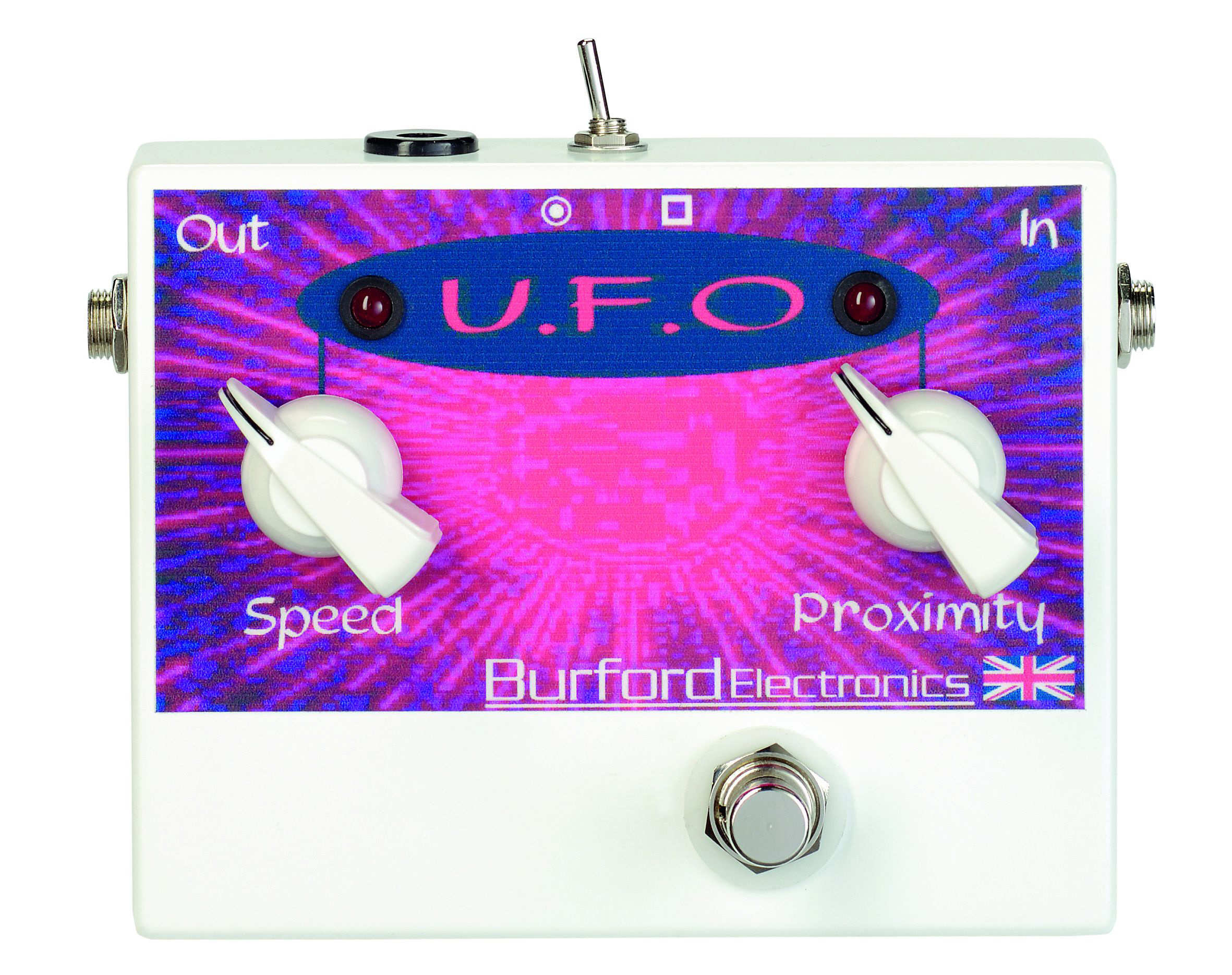MusicRadar Verdict
A refreshing update of an ancient effect, but importantly still manages to retain inherent musicality. Sounds have very little in common with traditional tremolo and are much better suited to chilled-out, modern styles. Good value too.
Pros
- +
Interesting alternatives to traditional tremolo effects.
Cons
- -
Controls a little confusing.
MusicRadar's got your back
Alan Exley has been in the UK guitar-making/repair business for many years and also offers instrument accessories, plus a custom scratchplate service. As if this wasn't enough, he's the brains and brawn behind Burford Electronics pedals; hand-built stompboxes that go beyond the mainstream market models.
The range includes some of the usual sonic suspects, most enhanced by a novel twist or two, while others explore aural avenues where few floor pedals have boldly gone before. Under scrutiny here is an original and affordable UFO repeater/tremolo.
Like all Burford pedals, it's packaged in a satin-white finished metal box, with model graphics and control info carried on a colourful plastic faceplate. Necessary 9V power is supplied by a single battery or the usual external wall-wart. The former is accessed by removing the baseplate, so super-quick changes aren't an option.
Top control count spans speed and proximity pots, a true bypass footswitch sited off-centre and twin red LEDs that indicate effect operation. A front-mounted mini-toggle selects two voicing options, designated by appropriate circle and square legends, while standard jack in/ out connections are sited on each side.
Sounds
The voicing switch certainly varies the available effect. In square mode, the speed control governs sharply defined on/off pulsing that goes from ponderous plod, through staccato chops to machine gun-like, ultra-rapid repetition. Switching to the circle voice makes things much rounder, with results ranging from soft tonal throb to liquid-like extremes.
In either setting the proximity pot allows anything from a gentle change in amplitude to full-on rhythmic beats. It behaves more like a balance control between the straight and effected sounds, but masks rather than reduces each against the other. This means that when it's turned fully on or off, the two signals are discernibly separate, providing an unusual, almost double delivery.
Want all the hottest music and gear news, reviews, deals, features and more, direct to your inbox? Sign up here.
MusicRadar is the number 1 website for music makers of all kinds, be they guitarists, drummers, keyboard players, djs or producers...
GEAR: We help musicians find the best gear with top-ranking gear round-ups and high- quality, authoritative reviews by a wide team of highly experienced experts.
TIPS: We also provide tuition, from bite-sized tips to advanced work-outs and guidance from recognised musicians and stars.
STARS: We talk to musicians and stars about their creative processes, and the nuts and bolts of their gear and technique. We give fans an insight into the actual craft of music making that no other music website can.

